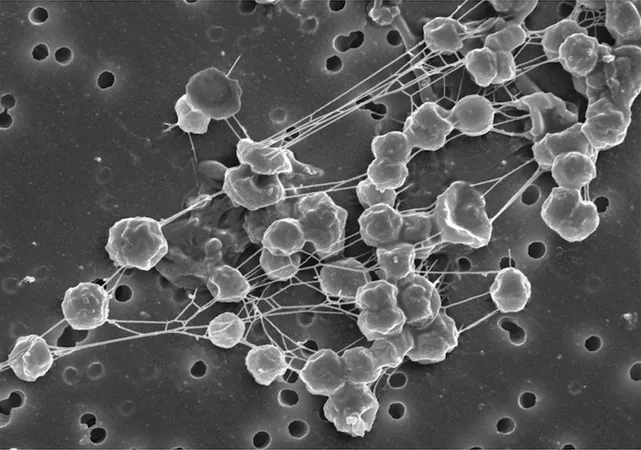
Could Mars Be Hiding Life Forms? The Shocking Truth!
2025-01-02
Author: Sarah
Introduction
Mars, often dubbed the “Red Planet” due to its striking reddish hue, has long captivated the interest of scientists and space enthusiasts alike. While Earth is bustling with life, the question remains: could Mars, once warmer and wetter, still harbor life forms today? Recent studies suggest that the answer might be more intriguing than we thought!
The Discovery of Extremophiles
The Earth's extreme environments have revealed remarkable organisms known as extremophiles—bacteria that can endure the harshest conditions. This raises the tantalizing possibility that similar life forms could exist on Mars. As researchers delve deeper into the Martian landscape, they are investigating whether extremophiles, particularly methanogens, could thrive in the subsurface regions of our celestial neighbor.
Mars: The Fourth Planet from the Sun
Mars stands as the fourth planet from the Sun, orbiting about 228 million kilometers away, with a thin atmosphere primarily composed of carbon dioxide. Its surface temperature can plummet from a chilling -125°C to a relatively mild 20°C, and it boasts some of the most stunning geological features in the solar system, such as Olympus Mons—the tallest volcano—and Valles Marineris, an expansive canyon system. Interestingly, Mars also has two small moons, Phobos and Deimos, which scientists believe may be remnants of ancient asteroids.
Methane Mystery
One of the most captivating discoveries is the presence of methane in the Martian atmosphere. Although it constitutes about 0.00003% of the atmosphere, the source of this methane remains a mystery. Could it be produced by some ancient microbial life, or is it a byproduct of geological processes, such as volcanic activity? The presence of this gas has fueled research into whether Mars could host primitive life, raising both eyebrows and hopes in the scientific community.
Recent Research Findings
In a recent groundbreaking paper authored by Butturini A and a research team from the University of Barcelona, the potential for extremophiles to reside within Mars' underground reaches was explored. The researchers focused on methanogens from the Methanobacteriaceae family, bacteria known for thriving in Earth's extreme conditions, such as the geothermal waters of Lidy Hot Springs in Idaho. The study suggests that similar habitats could exist beneath the Martian surface, providing potential sanctuaries for microbial life forms.
Subsurface Conditions on Mars
While the surface of Mars presents a harsh environment, marked by intense cosmic radiation and extreme temperature swings, conditions just a few meters below ground may be vastly different. The subsurface materials could protect against radiation and provide a more stable climate, where liquid water might exist. Past missions have indicated that water, perhaps rich in salts, has made its way to the surface, only to evaporate when exposed to the thin atmosphere.
Prime Locations for Life Search
The research team has identified the southern area of Acidalia Planitia as a prime location for future searches. This region exhibits high levels of radiogenic heat-producing elements, suggesting the presence of subsurface water—a potential breeding ground for life.
Conclusion
The implications of such findings are astounding: not only does it suggest that primitive life could potentially exist on Mars today, but it also opens up the doors to further exploration. With technological advancements and more exploratory missions on the horizon, scientists are on a quest to unveil the secrets that lie beneath the Martian soil. Could we be on the cusp of discovering life beyond Earth? Stay tuned, because Mars may not be as lifeless as we once thought!
 Brasil (PT)
Brasil (PT)
 Canada (EN)
Canada (EN)
 Chile (ES)
Chile (ES)
 Česko (CS)
Česko (CS)
 대한민국 (KO)
대한민국 (KO)
 España (ES)
España (ES)
 France (FR)
France (FR)
 Hong Kong (EN)
Hong Kong (EN)
 Italia (IT)
Italia (IT)
 日本 (JA)
日本 (JA)
 Magyarország (HU)
Magyarország (HU)
 Norge (NO)
Norge (NO)
 Polska (PL)
Polska (PL)
 Schweiz (DE)
Schweiz (DE)
 Singapore (EN)
Singapore (EN)
 Sverige (SV)
Sverige (SV)
 Suomi (FI)
Suomi (FI)
 Türkiye (TR)
Türkiye (TR)
 الإمارات العربية المتحدة (AR)
الإمارات العربية المتحدة (AR)